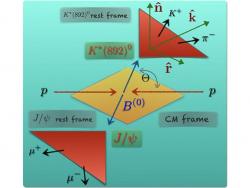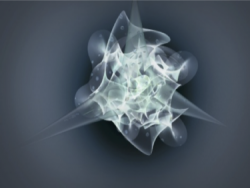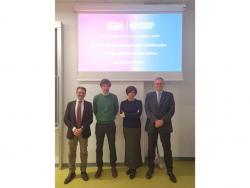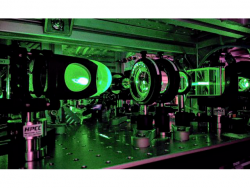Heavy Ions at Ultra-Relativistic Energies at LHC: ALICE

ALICE is a collaboration of over 2000 people, including researchers and engineers, from 171 institutions in 40 different countries. The Italian component consists of about 250 people and includes the Universities and INFN Sections of Bari, Bologna, Brescia, Cagliari, Catania, Erice, Foggia, Frascati, Legnaro, Messina, Padua, Pavia, Salerno, Turin, Trieste, Vercelli.
The ALICE Collaboration built a detector optimized to study nuclei collisions at the ultra-relativistic energies provided by the LHC. The goal is to study the physics of strongly interacting matter at the highest energy densities achieved so far in the laboratory. Under such conditions, an extreme phase of matter is formed, called a quark-gluon plasma. Our universe is thought to have been in such a primordial state for the first millionths of a second after the Big Bang, before quarks and gluons bonded together to form protons and neutrons.
Recreating this primordial state of matter in the laboratory and understanding how it evolves will allow us to shed light on questions about how matter is organized and the mechanisms that confine quarks and gluons. To this end, the ALICE Collaboration is conducting a comprehensive study of hadrons, electrons, muons and photons produced in collisions of heavy nuclei.
ALICE is also studying proton-proton and proton-nucleus collisions both as a comparison to nucleus-nucleus collisions and in their own right.
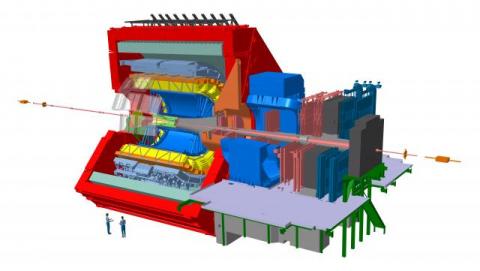
Figure 1: The apparatus of the ALICE experiment.
The apparatus (Fig. 1) consists of a solenoid magnet and several different detectors, mostly contained within the magnet and arranged in cylindrical symmetry around the axis of the LHC beams. This makes it possible to detect, with high efficiency, the multitude of different particles produced in very high energy ion-ion collisions (Fig. 2).
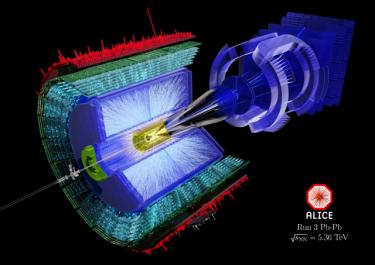
Figure 2: Lead-lead collision event at LHC Run3.
The apparatus measures approximately 20 meters in length and 16 in height and width. Starting from the volume close to the interaction zone and moving radially outwards, they are: the vertex detector (ITS), a tracking gas chamber (TPC), detectors for electrons, positrons and other high-momentum particles; a time-of-flight (TOF) detector; a photon spectrometer; an electro-magnetic calorimeter (EMCAL). Beyond the magnet there are a muon spectrometer and detectors dedicated to triggering and small-angle calorimetric measurements, plus detectors to monitor cosmic rays.
ITS2 (Fig. 3), i.e. the second version of the ALICE Inner Tracking System, is based on active monolithic pixel technology (MAPS), which integrates the particle-sensitive volume and the signal processing CMOS logic in one single crystal of silicon. The sensors, with a minimum thickness of only 50 microns, are organized in 7 cylindrical layers around the particle beams collided by the LHC.
The ALICE Trieste Group played a fundamental role in the development and construction of the ALICE ITS2: it participated in the design of the detector and in the characterization of the MAPS sensors, it oversaw the production of the signal and power distribution circuits and contributed to the construction of the larger layers of the detector.
At the same time, the Trieste group is leading the development of a future evolution of the detector based on thinned pixel sensors and with unconventional geometries.

Figure 3: Inner Tracking System of ALICE after the upgrade concluded in 2021.
The results of the study conducted by ALICE on the phenomena associated with the quark-gluon plasma, the strongly interacting deconfined medium produced at the LHC in Pb-Pb collisions, contribute to a better and broader understanding of the nature of the strong interaction, which cannot be obtained by reactions involving few nucleons in input. They also provide important results with which to compare the predictions of the evolution of the Universe in its first instants after the Big Bang; collisions between high-energy lead ions are in fact called Little Bangs, or Big Bangs on a small scale (Fig. 4).
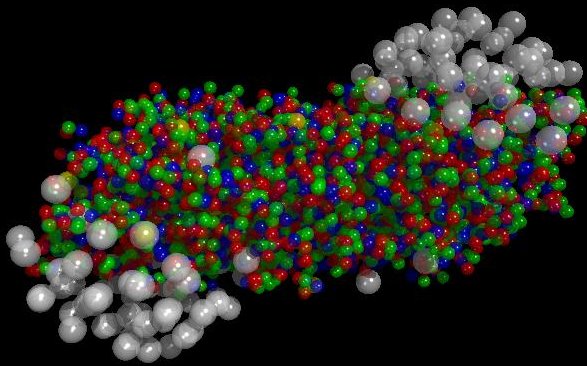
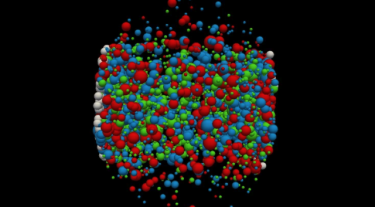
Figure 4: Quark-gluon plasma simulation.
The ALICE Group of Trieste is responsible for investigating the properties of quark-gluon plasma through various measurements. Some examples are the production of
- nuclei and hypernuclei, whose production mechanism is not clear and is still under investigation
- heavy flavor hadrons (with charm and beauty) that cross the medium interacting with it
- resonances that decay with a lifetime of the same order of magnitude as the quark-gluon plasma.
The group is also involved in the study of proton-proton collisions, both as reference measurements for heavy-ion collisions and by themselves. In fact, one of the most important discoveries in the pp collisions at the LHC is the observation of collective fluid characteristics and strangeness production enhancement (Fig. 5), strikingly similar to those observed in heavy-ion collisions.
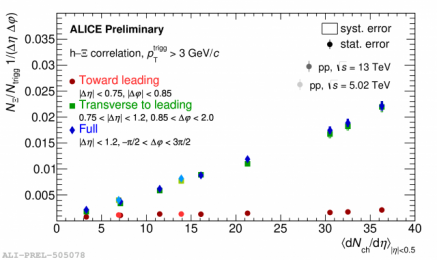
Figure 5: Xi baryon production in proton-proton collisions.


